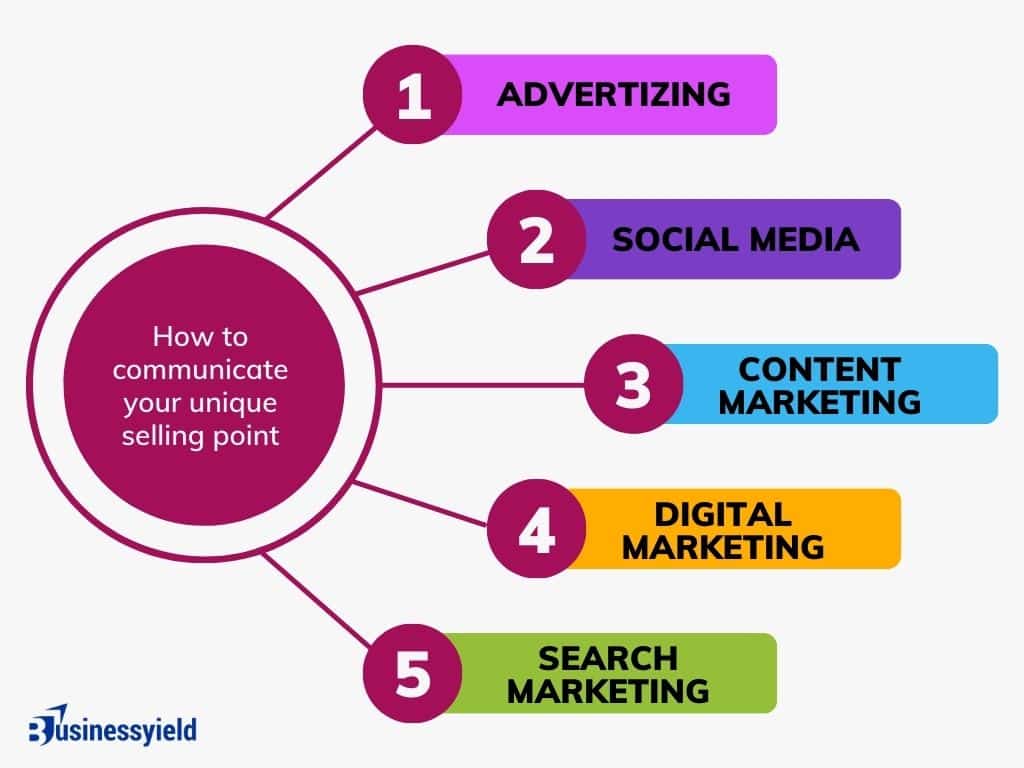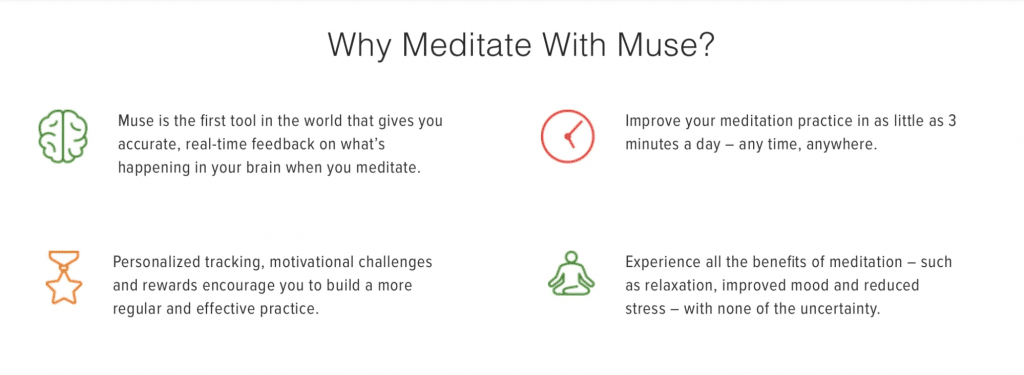There is no business without competition. It is the natural order, especially in the world of e-commerce where it is not only your local competitors that you need to worry about. This is where your unique selling point comes in.
Customers are overwhelmed with options, and they want to quickly understand what differentiates your product or brand from others. Knowing the right way to position yourself and your products can mean the difference between standing out and blending in.
Think of your marketing strategy as a map that outlines the path and journey of your business as you seek to sell and promote your business and services.
Key takeaways
A selling point is the unique benefit that makes your business or product better than the competition.
It is also known as unique selling point (USP) or unique selling proposition.
Your USP is what separates you from your competitors and what makes your brand attractive to potential customers in a way no other brand can match.
Finding your USP requires time and research.
Once you have your USP, it will make it easier to create content that appeals to your target audience.
Differentiating your product in a meaningful way is the key to reaching your target consumers and your brand goals.
What is a selling point?
A selling point, or unique selling point (USP), is the essence of what makes your product or service better than competitors. In online marketing, communicating your USP clearly and quickly is one of the keys to getting potential customers to convert to your site.
Also called a unique selling proposition, it defines your company’s unique position in the marketplace, getting at the heart of your business. This is the value you offer and the problem you solve. A strong USP clearly articulates a specific benefit – one that other competitors don’t offer – that makes you stand out.
If all the products appear to be the same, your prospective customers won’t know which one is right for them. Being clear about your unique selling proposition helps them differentiate between the variety of choices available to them. It is a crucial part of effective selling, otherwise, all your marketing efforts will go unnoticed and blend in, especially online with so many options.
A USP can also serve an important role internally, as it forces you to consider your company’s mission and its very reason for being. A successful business often determines which of its key competitive differentiators are clear. As a business owner, you need to consider and communicate who your business is for, what drives you to offer the services you offer, and how you want to make an impact in the target market.
Your USP is your key differentiator. It is the reason your customers will buy from you and is an important part of your marketing strategy for attracting new customers.
How to define your unique selling proposition
To create a USP, start with these four qualities that strong selling propositions should have.
1. Focus on your customers
Customer experience is at the heart of a good unique selling proposition. Today’s customers face a multitude of choices and tend to make decisions very quickly. To win them over, you must understand their needs and challenges, and offer them solutions.
Ask yourself these questions:
- How do your customers shop?
- How do they use your product or service?
- How does your brand align with your customers’ day-to-day experiences?
- What kind of interactions will they have with you in the virtual world or offline?
Now, try to write down what you offer your customers. This statement will be a summary of your overall market positioning, and it will change as you further develop your USP.
2. Root it in your business values
Your company was created for a reason. What are your values and how do you stand behind them? A USP is more than just a slick slogan or catchphrase to throw out to customers. It must be grounded in something deep and meaningful.
Go back to your mission and vision statements and input your customer needs into them. How will your USP communicate that you stand for something unique that meets demand?
You and your team can go back to your USP each time you create something new or plan the next steps in your growth. Test your plan against your business values and your USP. This keeps you customer-focused and ensures consistency of messaging.
3. Highlight your strengths
Identifying your strengths requires a bit of brainstorming. You’ll have to be honest about your weak points to identify your brand’s strengths. Ask the question, what do we do best?
“Unique” and “high value” are blanket terms that don’t speak to your customer needs. When considering the strengths of your products and services, keep your customers’ needs in mind. How do your best attributes solve a unique challenge for your customers?
Use precise language that captures your brand’s strengths, but do not make it too narrow that it limits eventual product growth and business expansion. All future offerings ideally fall under a single USP umbrella.
Recall your four P’s: product, place, price, and promotion. Recently, some have also added a fifth P: people. Focus on your strengths to determine the distinctive characteristics of your business values, products, and services.
4. Position yourself in contrast to competitors
Your USP must clearly articulate to customers how you will better meet their needs compared to your competitors.
Once you know your strengths and how they provide solutions that customers need or want, examine your competition. Identify your competitor’s strengths and weaknesses, and directly contrast them to what you’re selling. This will help you pinpoint how you stand out to fill a niche demand. Your differentiators may be nuanced.
- Are you giving customers a better online experience than your competitors?
- Are you making it easier for customers to access and pay for your products or services?
- Do you have stronger values, processes or knowledge than your competitors?
- Do you offer 24-hour service or free delivery?
None of these bullet points are a USP, in themselves. In combination, however, they could help you to consider a unique customer experience that is different from your competitors. In some cases, that contrast forms the core of your USP.
Below is a checklist outlining how you can define a unique selling point (USP) for your business:
How To Define a Unique Selling Point
How to communicate your unique selling point
There are many ways you can communicate your USP to your customers and prospects. These include:
- Advertising. Traditional media advertising and brand marketing campaigns can be a good way for your business to get your brand in front of your target audience and communicate your USP.
- Social Media. Social media is a large driver of brand awareness for many companies. Having a strong presence on social networks and working with social media influencers can push you to the top of the pile.
- Content Marketing. Creating interesting or viral content that also talks about how and why a company is different from the competition can be a good way to communicate USPs.
- Digital Marketing. For an online store or digital business, the USP is often presented as the tagline of a webpage or as a bulleted list on a product page.
- Search Marketing. Improving your website’s SEO and ranking for key terms in search engines such as Google can be a good way for you to generate visibility for your company and communicate your USPs.

Examples of products with unique selling points
Third Love
Women’s lingerie is a billion-dollar industry, so newcomer Third Love had to find a way to make sure it was able to compete with legacy brands.
Third Love made its “We have the right fit” USP an integral part of its branding. It’s not just a key part of the messaging in its ads and the copy on its site—it even has a Fit Finder quiz that allows first-time customers to find the right fit for them.
To go even deeper on its promise, it also offers half-sizes and a “try before you buy” guarantee.

Third Love’s selling point is a powerful promise. While other brands might offer a sizing chart to help shoppers, Third Love prioritizes getting you the right fit based on your individual needs.
Of all the messages it could have focused on around style or quality, it honed in on a pain point that many women experience when shopping for bras, and chose to double down.
Muse
Muse is a noteworthy example of why you need a USP even when your products are already unique. It offers the first consumer tool that can provide real-time feedback on your brain’s activity as you meditate.

Muse is the first company to offer what it does, but having no direct competitors doesn’t mean it has no competition at all. People have been doing just fine for centuries without its product, after all.
In this case, Muse’s biggest competitor is the status quo: unaided meditation. So its USP, naturally, is around enhancing your existing practice to “get the most out of meditation.”
Saddleback Leather
One of the first things you notice about Saddleback Leather’s site is its famous tagline: “They’ll fight over it when you’re dead.”

It’s a sentence that immediately conveys the unique value of Saddleback’s products to its potential customers, in its signature irreverent tone: this product is built so well it will outlive its owner. The messaging also refers directly to its 100-year warranty, which backs the promise with a guarantee that the products will last you a lifetime and then some.
Warby Parker
Warby Parker’s USP is all about customer service and experience. The popular DTC eyewear brand sets itself apart from the crowd by offering a home try-on program. It lets customers try five frames at home, for free.

Once the try-before-you-buy period is over, customers must return the items they don’t want (using a prepaid return shipping label), and can purchase the items they like.
The service allows it to compete with brick-and-mortar retailers, and stand apart from them. It meets customers where they are by taking something that used to only happen in person (buying glasses) and makes it convenient and easy to do from home.
Tattly
Many temporary tattoo products are intended for kids and feature simple and silly designs. Tattly takes a different approach, offering gorgeous, intricate art for people of all ages.

These temporary tattoos are meant to be beautiful like traditional tattoos, allowing customers to express themselves without the commitment or high cost of real tattoos.
Tattly doesn’t have many direct competitors that sell similarly bold designs made from safe materials. This makes it easier for the brand to develop its USP, in theory, but it still needs to differentiate itself from the inevitable comparisons between its products and its more familiar counterparts.
By focusing on the art, it’s able to do that with its USP, which it expresses as: “Fake tattoos by real artists.”
Why the selling points need to be ‘unique’
In the age of the e-commerce business, apps, and social media, everything and everyone is accessible online. The same resources you have at your disposal, your competitor has at their disposal too. You have to stand out from the crowd. If you’ve ever heard the principle ‘purple cow’ before, that’s a great analogy for this situation.
As marketing guru Seth Godin once described in his aptly titled book “Purple Cow: Transform Your Business by Being Remarkable”, you’d never notice a normal cow as you’re driving past an open field. But a purple cow, now, that would be remarkable. It’d stand out from the other cows.
You need to solve customer needs in the same way. Customers online will come across many businesses that offer similar, if not the same, set of products and services you do. You might figure your offering to be unique already, but if you fail to address your marketing messages specifically at your ideal customer in a compelling way, you’ll blend in with all the other cows.
Something you shouldn’t forget is that unique selling points may become commoditized and less unique over time. Probably the best example of this for e-commerce businesses and retailers is free shipping. A purple cow at first, but now that everyone is offering it, that cow starts to look less purple by the minute.
The best way to prevent blending in is to reevaluate your USPs every once in a while. Talk to your ideal customers directly and figure out if you’re still addressing all their pain points.
What is the difference between buying and selling points?
Buying points, also known as buying motives, are those things that make people want to purchase a product. For example, vanity makes a man buy things that others do not have. Affection for children may be responsible for buying toys. Patriotism may be a motive for buying goods made in the country. Vanity, affection, and patriotism are buying motives.
Thus, a buying point is the feelings, thoughts, emotions, and instincts that create a desire in the customers to buy the mind of the customer, but not in the product.
The selling point, on the other hand, is what makes a product stand out from its competitors.
Why is it important to have effective selling strategies?
Whether you’re new to sales, considering it for the future or a seasoned professional, some common practices are used to facilitate the process of exchanging goods for money. These selling strategies may help you:
- Present your product with confidence
- Expand and retain your customer base
- Drive sales and increase commissions
- Qualify for promotions
Reliable techniques are just as important to salespeople as motivation, patience, and resilience. With a targeted approach to connecting with your ideal customer, you may be able to increase sales conversations and advance more quickly through your career.
Recommended Articles
UNIQUE SELLING PROPOSITION: What It Is & How to Create an Outstanding One!
COMPETITOR WEBSITE ANALYSIS: Top 10+ Web Analytic Free Tools in 2023
Value Proposition Examples That Made A Difference (The Blueprint For Success)
The 3 Keys To Branding An E-commerce Store
MARKET TALENT: Fintech & Banking Recruitment Agency






